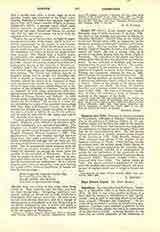

Capefigue, BAPTISTE-HONORA-RAYMOND, historian, b. at Marseilles, 1802; d. at Paris, December 22, 1872. In 1821 he was a law student at Paris; at a later date he became a contributor to the “fuotidienne”, and in 1827 he was made editor of the Legitimist journal, “Messager des Chambres”. On account of his journalistic activity in behalf of the government, Capefigue soon received a position in the Ministry of Foreign Affairs, but lost it in consequence of the Revolution of July. A strong Royalist, he was after this an active supporter of the Orleanists in his writings and later of Napoleon. Capefigue was a prolific writer; his works are, consequently, somewhat superficial and of no great historical value, but in them he always maintained his convictions as a devout Catholic. His first work was entitled: “Recueil des operations de Fannee frangaise en Espagne sous les ordres du Duc d’Angouleme” (Paris, 1823). His principal work, “Histoire de Philippe-Auguste” (Paris, 1827-1829), 4 vols., passed through several editions. The best of his publications is: “Histoire de la Restauration et des causes qui ont amene la chute de la branche atnee des Bourbons” (Paris, 1831, 10 vols; 3d ed., Paris, 1842, 4 vols.). Of less importance was the work, on a more ambitious scale, “L’Europe depuis l’avenement de Louis-Philippe” (Paris, 1845-1846, 16 vols.; 2d ed., 1847-1849, 10 vols.), and the publication entitled, “L’Europe depuis la chute de Louis-Philippe jusqu’a la presidence de Louis-Napoleon Bonaparte” (Paris, 1849), 3 vols. Mention should also be made of: “Les reines de la main gauche” (Paris, 1858-1864), 15 vols., which includes sketches of Agnes Sorel, Pompadour, du Barry, etc., and “Les reines de la main droite” (Paris, 1856-1864), 6 vols., sketches of Catherine de’ Medici, Elizabeth of England, and Maria Theresa, etc. Among his writings which belong to the department of church history are: “Vie de saint Vincent de Paul” (Paris, 1827; 2d ed., 1840); “Quatre premiers siecles de l’Eglise chretienne” (Paris, 1850), 4 vols. Capefigue also produced a historical novel called: “Jacques II it Saint-Germain” (Paris, 1833), 2 vols.
PATRICIUS SCHLAGER

